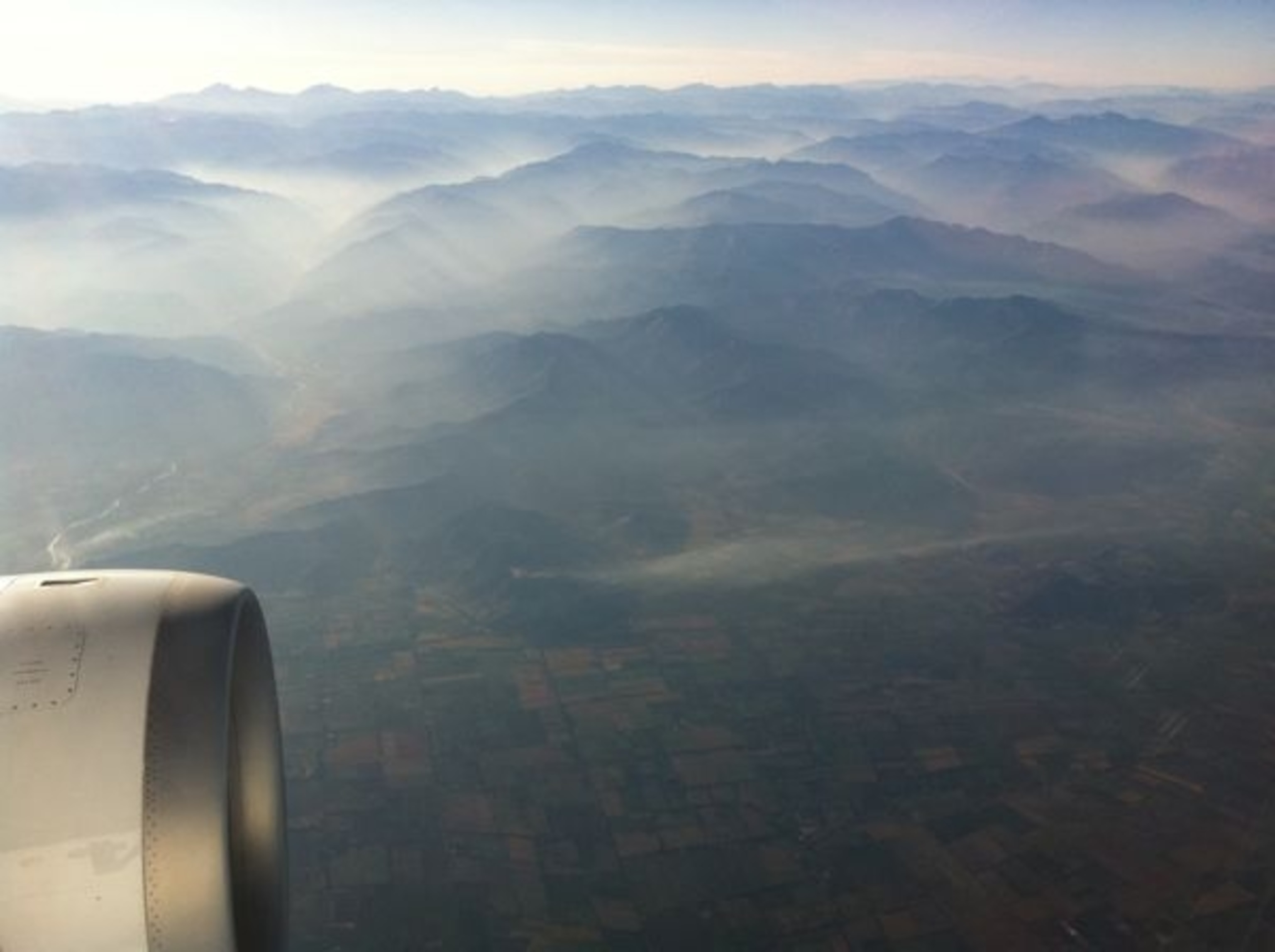
Airplane Mode

I spend a lot of time on planes.
This is not a special feat. A century ago, putting man in the sky for just a few seconds conquered the impossible dream. Today, air travel feels a lot less dreamy. It fills days and nights of our lives—I’m guessing that right now, more people spend more time on planes than ever before.
On Monday afternoon, I left National Geographic. On Tuesday, I landed in Chile, and on Wednesday, I flew to the southernmost airport in the world: Ushuaia, Argentina.
That’s three planes in three days—flying half-way around the world. A year ago I made this same exact same journey—Washington, DC to Ushuaia—except that I traveled overland: 40 buses in 40 days. Both trips began on the steps of National Geographic headquarters and both trips ended at the same dock at the end of the world, boarding the MV National Geographic Explorer.
The difference lies in what I saw and the time it took—three days versus a month and a half. Airplanes negate time by speeding it up. Flying is so efficient that ultra-fast travel has become the new normal.
But flying is anything but normal. I still find the entire concept such a phenomenon—to be strapped into a seat, to be launched at breakneck speeds a mile upwards, and then to sit back and relax until we are dropped back out of the sky onto an empty parking lot. Meanwhile, we’ve crossed oceans or continents or gone right over the North Pole.
Twenty-first century aviation is an exercise in sensory deprivation. The plane clears the clouds and the world disappears, or else we close our window shades to block out the sun, or wear a sleep mask to make it dark. We wear headphones or earplugs to void out the natural sounds. We are totally removed from the earth and its recognizable landmarks.
And yet, humans need stimulation—so we listen to music, we play games on our phones or do crosswords. We watch a movie or two . . . or three or four in a row. We eat and drink and shop in the air or stretch in the aisle and chat with flight attendants, then check the in-flight map to see if we’ve moved an inch further. Plane time is blank time that we rush to fill up with activities: desperate animation in our moment of suspended animation.
I envy the people who simply sleep through a flight. I tend to merely doze–floating into a kind of sleep mode where my subconscious keeps refolding my body into a new position while my conscious is a fussy child who refuses to nap. Upon arrival, I’m exhausted and befuddled, suffering from a permanent yawn. My post-flight hairdo is bedhead, without the benefit of a bed.
- National Geographic Expeditions
Yet despite the circles under my eyes, I keep taking planes for the places that planes take me. The price of wandering the globe is to live some of life in airplane mode—switching off so that we can switch back on in some remarkable faraway place.
My goal is to combine the two—real life with airplane mode—gleaning travel moments from travel time. Which is why, to the annoyance of other passengers, I always leave my window shade open, hoping to catch a glimpse of earth below. It’s how I’ve watched thunderstorms flash in the Congo, seen the sun split the North Sea horizon, stared at stars in the South Pacific, skimmed over Siberian snowdrifts at 30,000 feet and spotted the top of Mt. Everest poking through the clouds.
I haven’t “been” to these places, but I have seen them—I remember each of them clearly. I was always on a plane and always doing something else, but I was still traveling. For instance, I wrote most of this while flying over the Andes. And this very last sentence? That’s the Strait of Magellan, right underneath my feet. I can see it.
